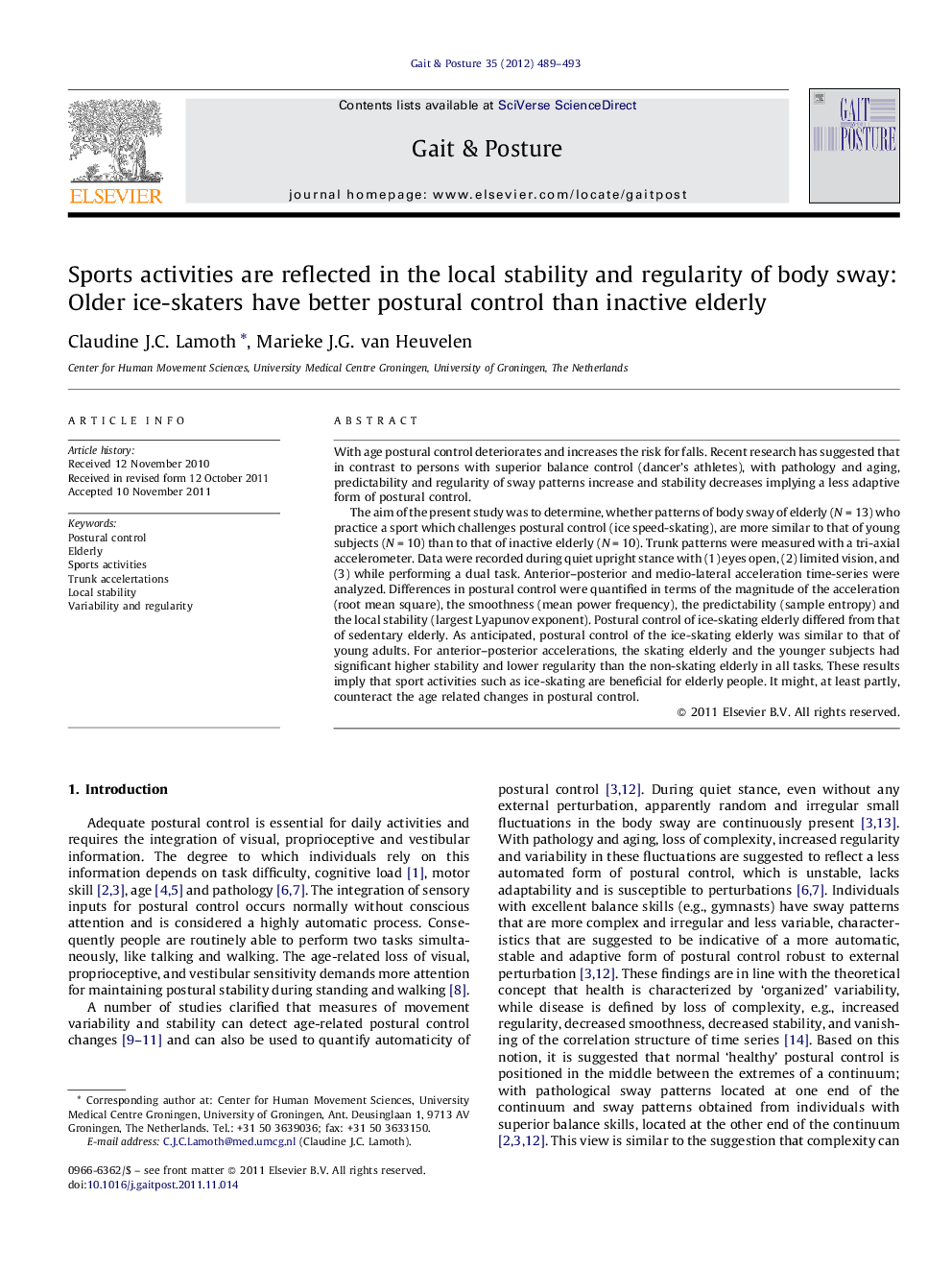| Article ID | Journal | Published Year | Pages | File Type |
|---|---|---|---|---|
| 6208020 | Gait & Posture | 2012 | 5 Pages |
With age postural control deteriorates and increases the risk for falls. Recent research has suggested that in contrast to persons with superior balance control (dancer's athletes), with pathology and aging, predictability and regularity of sway patterns increase and stability decreases implying a less adaptive form of postural control.The aim of the present study was to determine, whether patterns of body sway of elderly (NÂ =Â 13) who practice a sport which challenges postural control (ice speed-skating), are more similar to that of young subjects (NÂ =Â 10) than to that of inactive elderly (NÂ =Â 10). Trunk patterns were measured with a tri-axial accelerometer. Data were recorded during quiet upright stance with (1) eyes open, (2) limited vision, and (3) while performing a dual task. Anterior-posterior and medio-lateral acceleration time-series were analyzed. Differences in postural control were quantified in terms of the magnitude of the acceleration (root mean square), the smoothness (mean power frequency), the predictability (sample entropy) and the local stability (largest Lyapunov exponent). Postural control of ice-skating elderly differed from that of sedentary elderly. As anticipated, postural control of the ice-skating elderly was similar to that of young adults. For anterior-posterior accelerations, the skating elderly and the younger subjects had significant higher stability and lower regularity than the non-skating elderly in all tasks. These results imply that sport activities such as ice-skating are beneficial for elderly people. It might, at least partly, counteract the age related changes in postural control.
